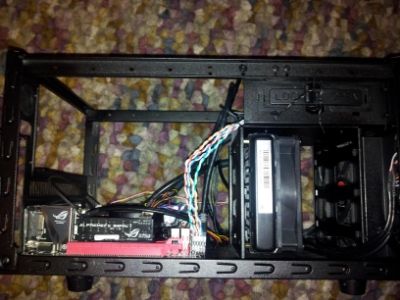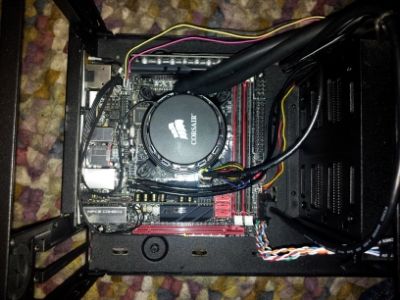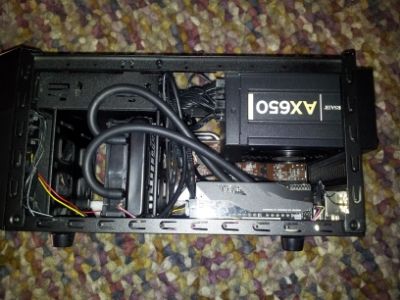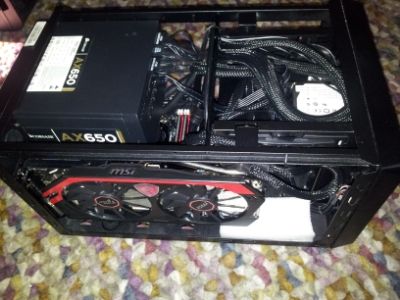So - after a significant delay in both picking the winners and shipping out the prizes to the Fractal Design Arc Mini R2 competition, a really big box turned up on my doorstep. Inside that box was a big box:
I'm not going to fill this page with low quality images that offer you little information over the stock images from Fractal Design directly, but I will mention some of the neat things I've not seen elsewhere as well as showing how my system fits in the case.
Firstly size-wise, it's OK. Sure it's big for a microATX case, but it must be half the volume of the SilverStone TJ09 my last high power rig lived in. The old SilverStone was a vastly better crafted case, but then it cost something like 3x the price. This Fractal Design box is at the low end of the market, but mostly well designed and thought out.
It's entirely steel construction, but the front panel is a really nice fake brushed aluminium effect. I'm not sure how had wearing it will turn out to be, but then I'm also not sure that real brushed aluminium is hard wearing either. A close up, because I've not seen a picture elsewhere.
Lets take a look at the inside and see about putting a build together. It's mostly tool-less construction. 2 thumbscrews hold each side panel on with a further 2 holding the roof cover on. My only issue is how tight all of these screws are from the factory. It's only tool-less once you've taken it apart once...
The motherboard tray isn't removable (a feature I loved on the TJ09), but there is a decent sized access hole behind the CPU (for back-plates etc). Plenty of rubber grommets for cable management. All of the drive bays are removable (2 blocks of 3 for the 3.5" bays and a single block of 2 for the 5.25" bays).
Every fan intake has a removable filter (assuming you configure the back panel fan as an exhaust). Front filter push-pops out; bottom filter is pulled out the back; top filter is removed via those thumb screws I mentioned earlier.
One other interesting feature was the rubber stands under the PSU. I'm guessing they're to reduce vibration and hence noise from the PSU. The PSU I'm using doesn't suffer from problematic vibration (a Seasonic-manufactured Corsair AX650), but others might. However - none of the fans supplied have rubber isolation mountings. Ooops. The case has a in-built voltage selector for up to 2 case fans - at 5v they're whisper quiet, but at 7v and 12v they have a clicking vibration.
So what went in?
An Intel i5 4670k, Maximus VI Impact, 8GB RAM, MSI GTX760 Twin Frozr, 2.5" 320GB hard drive, Corsair AX650 PSU, Corsair H40 AIO cooler.
Why use an ITX motherboard? That will become clear shortly. Everything went in really easily (and I could hide the hard drive). A decent bag of screws was included, along with a motherboard riser installation tool.
The downside is that there simply isn't enough room between the motherboard tray and the side panel for good hidden cable management. Especially because there are a couple of SSD trays hiding back there which take up more of the space. I suspect you could spend a couple of hours getting everything just right, but I don't have that kind of patience.
I was really pleased how nicely it went together and how professional the final build looks.
So what don't I like? The choice of components is because this case has to compete with a CoolerMaster Elite 120 Advanced case I already had for an eGPU build.
In the CM120, I'm using a 4.2GHz CPU overclock together with 1260MHz boost and 6.9GHz mem on the GTX760. In that cramped case I get CPU OCCT temps of 80C.
In the Arc Mini R2, I get a 10C drop over that with the fans at 5v and close to 20C drop with the fans at the annoying 12v setting. That should allow a decent additional overclock if I can put up with the size and noise.
Unfortunately I don't really want to find a home for a system of that size (and noise) when the CM120 copes so admirably. It's tucked away in the corner of the lounge, under a corner table, a place that the Arc Mini R2 simply doesn't fit. How come? Because I don't sit in front of a rig anymore. My gaming is done on a laptop via Steam Home Streaming and on and nVidia Shield.
I'm confident that the Arc Mini R2 can house a monster-overclock system (it has space for a 360mm rad, 240mm rad and 2 120mm rads AT THE SAME TIME). But if I was going to spend that much on cooling, I'd probably want a flashy all aluminium case to house it in.
My expectation is that I'll actually use it for the next time a family member wants a new machine. It looks like a more expensive case than it is, was a joy to build and had decent cooling potential. There's a lot to like. It just doesn't suit my needs...





 LinkBack URL
LinkBack URL About LinkBacks
About LinkBacks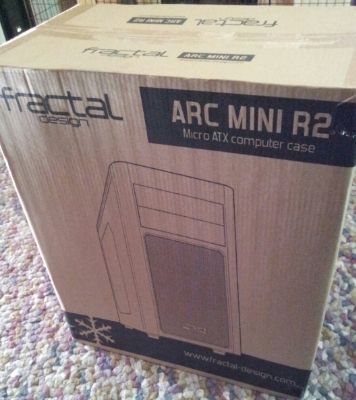
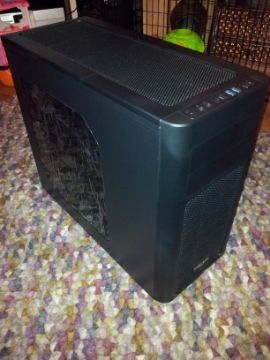
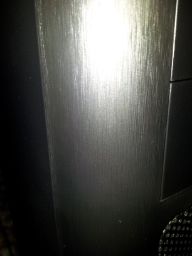

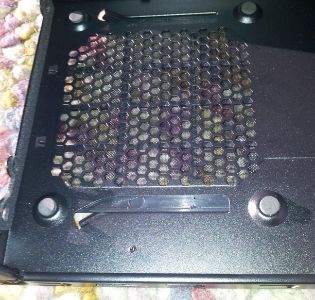


 Reply With Quote
Reply With Quote
